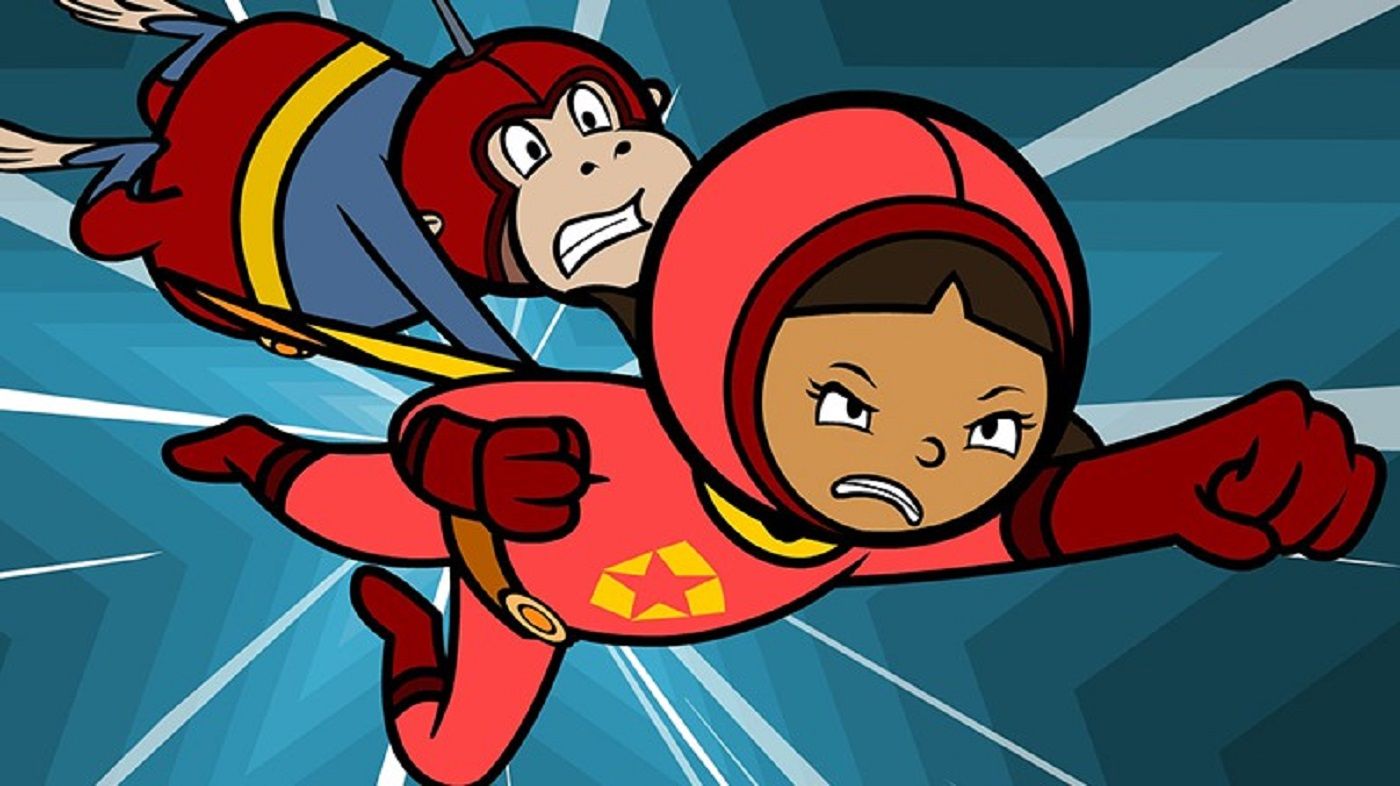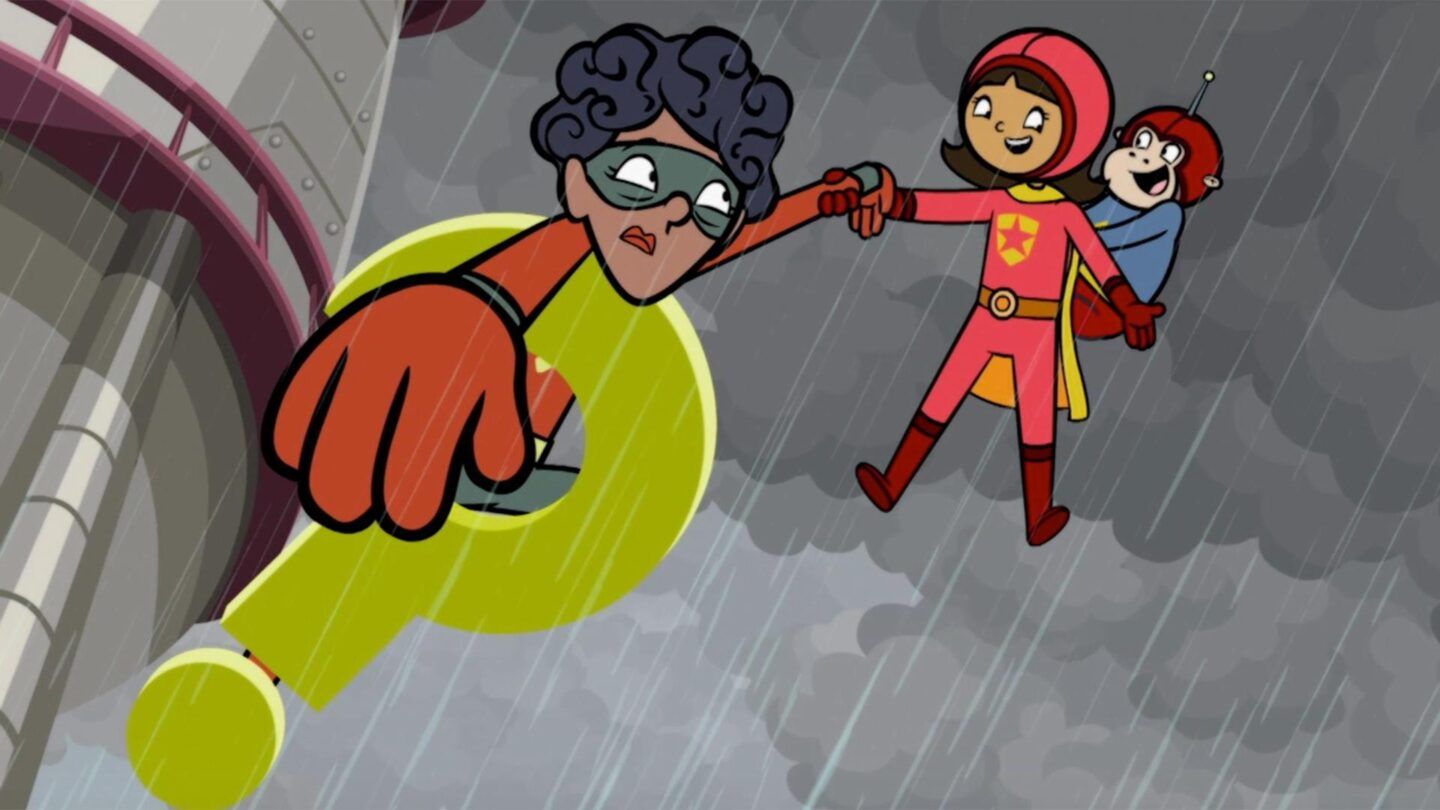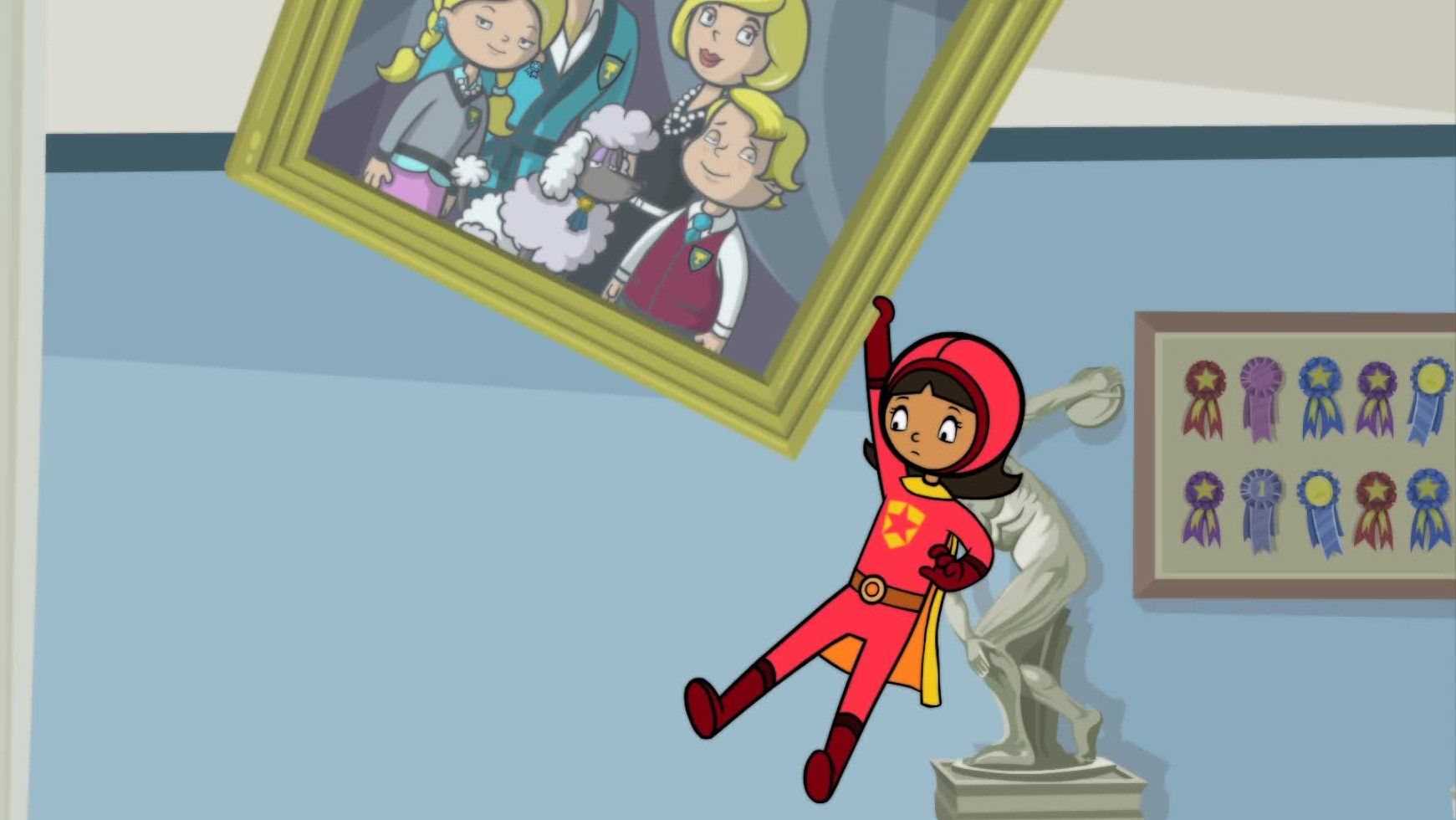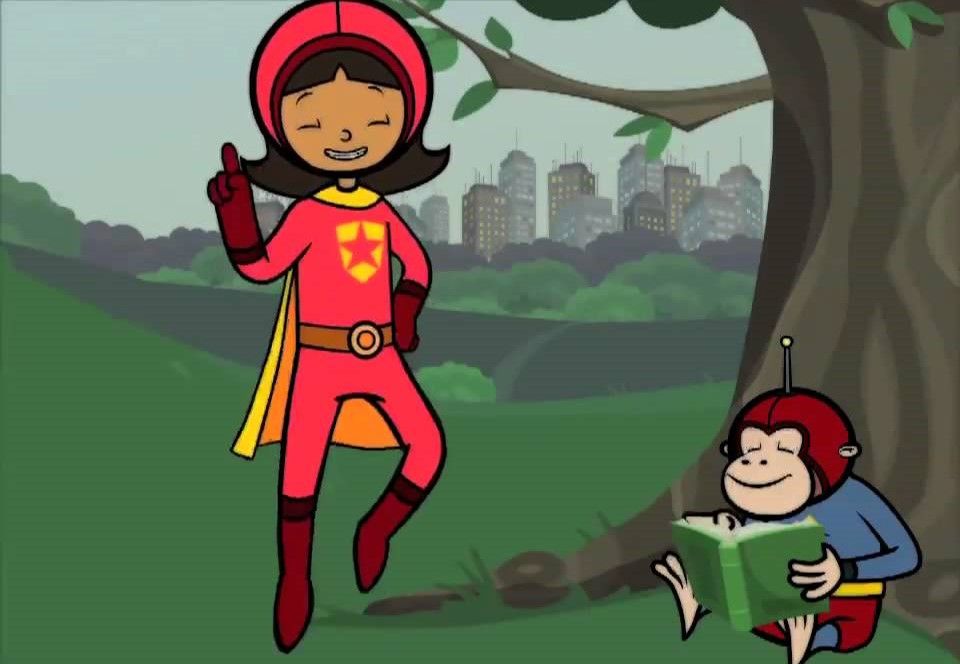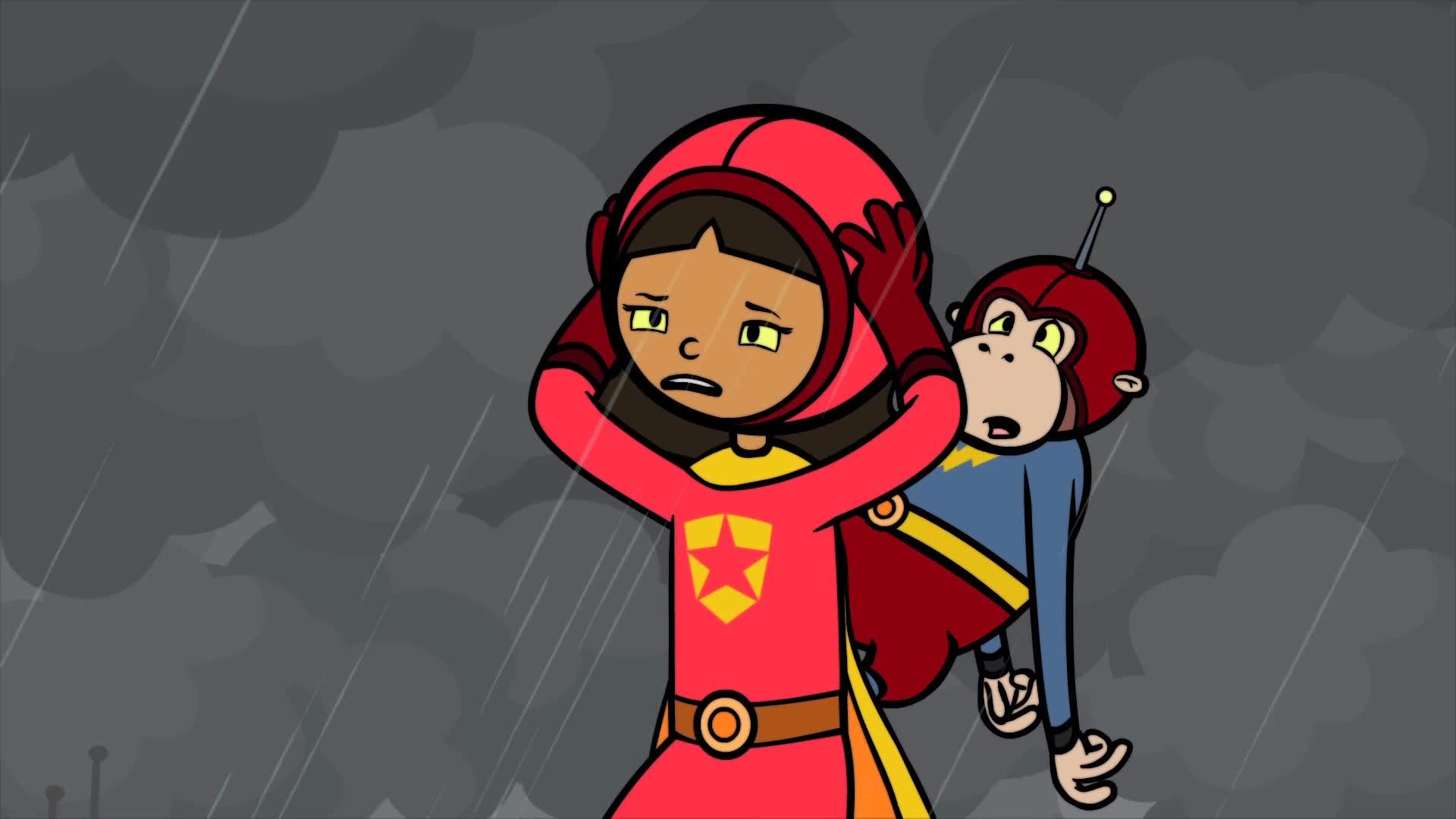It’s a bird? It’s a plane? It’s WordGirl! In 2006, a new children’s show came on PBS that introduced audiences to a new superhero: WordGirl. Set in a town riddled with grammatical crime, WordGirl is a fifth-grader with a sidekick monkey who uses her expansive vocabulary and grasp of grammar to send her city’s toughest, and often silliest, villains to jail. Fighting bad guys like Chuck the Evil Sandwich Making Guy and Lady Redundant Woman, WordGirl taught young PBS viewers all about the power of the English language.
Dorthea Gillim created the show with the idea that children’s television wasn’t intelligent enough. She felt that children’s television underestimated their sense of humor and their intellect, and WordGirl was going to change that. She wanted TV that left kids laughing and a little smarter when the episode was over. Another addition to the children’s show space was the decision to make the superhero a nonwhite, fifth-grade girl. Technically her race is “Lexiconian” because she is not from Earth, but we can infer based on her look that despite not being from Earth, she is still not white and that has an impact on viewers. The children growing up watching WordGirl and idolizing a non-white, little girl superhero were the same children who grew up to demand new and diverse superheroes in the Marvel franchise.
In the same way that the children’s television space needed a shake-up, Marvel needed a shake-up as well. After years of all white-male superheroes getting their own feature films (with the inclusion of a hyper-sexualized Scarlett Johansson as Black Widow), the fans demanded more representation in the franchise in race and gender. In 2013, two new movies went into production that broadened the definition of what a Marvel superhero could look like. Black Panther and Captain Marvel were the first two diverse Marvel characters out of a plethora of candidates that were chosen to get their own feature films.
As the first female-led Marvel film, there was a lot of pressure on the creators, writers, and actors to create a character and a film that represented all women. It is no secret that in Hollywood action movies starring women are unpopular to produce because of the belief that women can’t carry an action movie and bring in a good audience. Around the same time that Captain Marvel was being produced, Universal Pictures was on damage control for their Ghostbusters reboot that gender-bent the original movie. The blatant racism, sexism, and ridicule Ghostbusters faced proved that even in 2016, women couldn’t successfully star in an action film without backlash. Cautious but not afraid of controversy, Captain Marvel embraced centering the hero’s femininity in the story. Captain Marvel wouldn’t be a superhero who just so happened to be a woman, she would be a woman superhero.
When it comes to being the first in their category, WordGirl and Captain Marvel have a lot in common. Both gave audiences something new that they had been desperate for. The superhero genre is riddled with sexism and gender stereotyping. For female superheroes, their job is the save the world and look hot while they do it. Taking skimpy outfits over from their comic book days, female superheroes are stuck in their retro revealing and sexist outfits. And although giving Captain Marvel her own movie was a great step in the right direction, the Marvel and DC movies are filled with one sexist trope after another. From hyper-sexualized outfits to women having to constantly be saved, just about every stereotype and trope of women can be found in superhero movies. Captain Marvel and WordGirl set examples for how things could be different in the superhero/action space. Marketing and commercialization of superhero films would suggest that kids are a huge audience for production companies like Marvel Studios. Data has shown that there are more adults watching Marvel films with children in their house than without. So, the impact these films have on children should be considered when making films.
In children’s media, boy characters outnumber girl characters two to one. This fact and the consistency with which children’s media reinforces traditionally male characteristics (like being aggressive, being strong, being a leader, taking risks, etc.) leads children to believe that male characteristics are more valued in society. One study found the more television a child watches, the more likely they are to believe boys are better than girls. Gender stereotyping is very limiting as well. Children who witness gender stereotyping learn what their hobbies should be, how they should act, how they should feel about themselves, and what careers are an option for them. In a more extreme sense, sexism in television for children is associated with power-based personal violence and sexual aggression. As children learn to be more stereotypically masculine, they also become more stereotypically masculine. And although a straight line can’t be drawn from stereotypes in children’s media to violence against women, it is something to consider.
Creating a show or a movie that features a woman or a girl engaging in action can have a devastating impact if it’s not done correctly. Captain Marvel is great for being the first of its kind, but it certainly isn’t flawless. Critics of the film pointed to Captain Marvel’s shallow take on feminism. The thought was that a film with the message, “girls are just as good as boys” was inherently sexist because it only valued women in comparison to men and didn’t let the female lead and her powers speak for themselves. Captain Marvel was reactive instead of proactive. Even though the movie came out in 2018, there was still a long way to go.
WordGirl took a different approach to female superheroes. With a similarly young audience to a movie like Captain Marvel, WordGirl decided to forget the context that came before it and just give kids what they should have had from the beginning: a confident, girl superhero who is smart and powerful. Starting at the age of 2, children are forming stereotypes. And by the time they are 4, they’re acting on them. Since WordGirl audiences can tend to be younger even than that of Marvel audiences, making sure the stereotypes they see at 2 are correctly informing their actions at 4 is important. Instead of comparing WordGirl to Superman and showing how she is just as good, if not better, WordGirl got to exist in her own space, being her own force. This was a very proactive approach to fighting gender stereotypes in children’s media. WordGirl also excelled in diversity. Besides side characters, the first female superhero of color was Ms. Marvel from the show of the same name that just wrapped up its first season. What WordGirl did in 2006 took Marvel 14 years to do. When discussing stereotypes and how children are constantly forming and acting upon learned stereotypes, it is crucial to include race in that discussion.
One thing that both WordGirl and Captain Marvel excelled in was understanding their audience and hiring writers accordingly. The creators of WordGirl wanted to create a show that spoke to children’s intellect and sense of humor. Considering it more of a comedy show than a children’s show, the WordGirl team hired writers from The Onion, Family Guy, and cast members from comedy groups, Saturday Night Live, Arrested Development, and solo standup artists. Playing up the comedic nature of the show allowed the show to stand on its own as opposed to being seen more as a show that just children like. The show took itself seriously enough to create something of merit without losing the innocence and silliness of a children’s television program.
The creators of Captain Marvel were a little less sure of the best way to address their audience in the beginning. When the project was announced, Marvel executive Kevin Feige was quoted saying he didn’t think hiring a woman as the director was necessary for making Captain Marvel a great movie. Marvel was quick to add that it was something important to consider. Eventually, a team of largely women was hired to write the movie, and one of the film’s directors was a woman. Having filmmakers or television creators who don’t understand what story they are trying to tell or who the audience of the content is can create a huge problem in reception and impact.
Writing characters like Black Widow or Dora in such a way that they play into the male gaze has a catastrophic impact on young viewers. Making sure creators are aware of the impact helps to ensure they tell the story correctly. Women who have been negatively impacted by the hyper-sexualization of female characters or the sexist portrayal of women in action films will do a better job producing characters that defy those stereotypes. With WordGirl, the different approach to children’s television landed them seven Daytime Emmy nominations, winning four in Outstanding Writing in Animation and Outstanding Writing in an Animated Program.
WordGirl and Captain Marvel were both the first in their category to bring feminism to superhero stories. They took different approaches, but in the end, they opened the door for new storytellers and more diverse stories. WordGirl and Captain Marvel are the founding mothers of diversity in the superhero space who shouldn't be forgotten. The same things Captain Marvel was doing in the Marvel Universe, WordGirl was doing for PBS. These game-changers paved the way for Ms. Marvel, DC Superhero Girls, and so many others. A lot can be learned from the techniques WordGirl and Captain Marvel used to get their points across. Specifically that diversity matters to children of all ages and there are lots of different ways to get diverse stories across.

